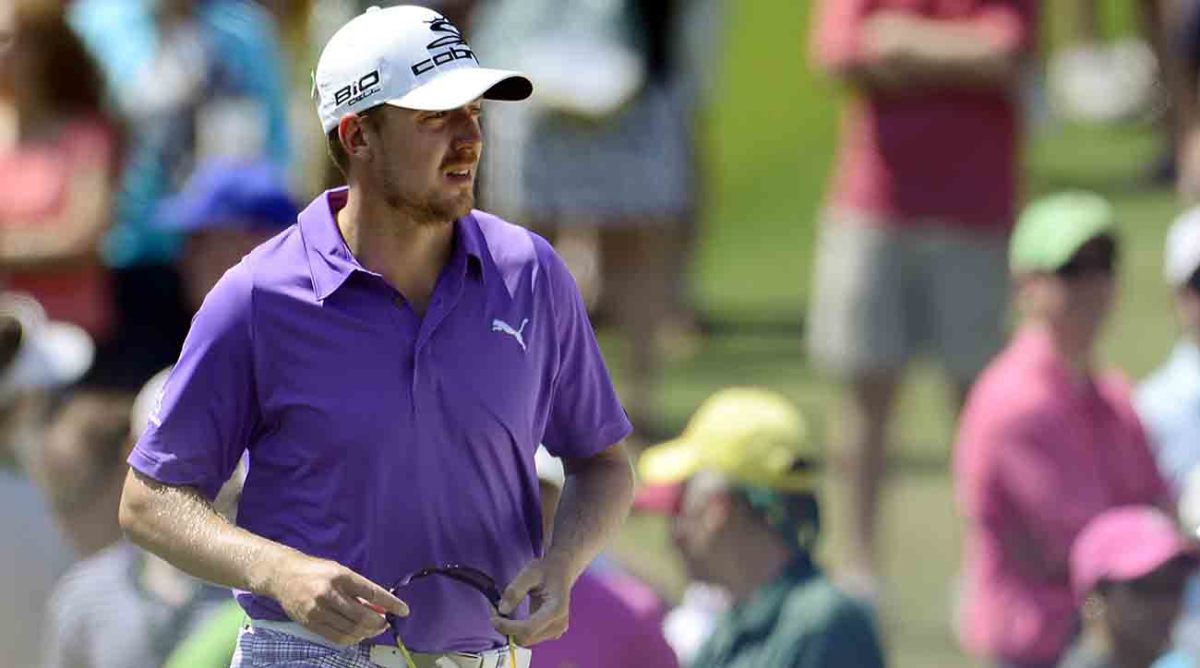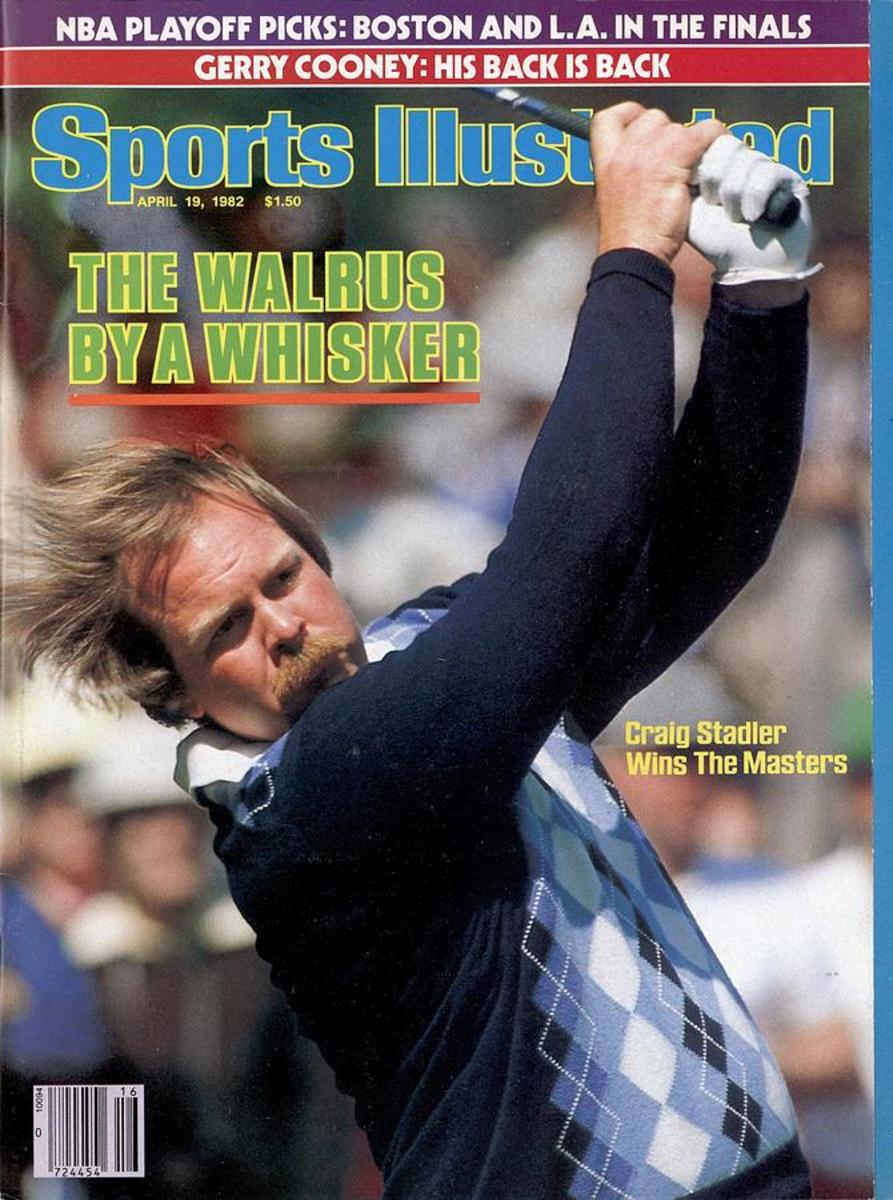Oh So Close to Glory: Ranking 10 Forgotten Masters Runner-ups

You win a Masters Tournament, you earn a summer home on golf’s Mount Olympus. You’re a legend for all time. You get free pie for life. (The Ranking made that last one up. But a man can dream.)
You almost win a Masters and, well, maybe you go on to have a darn fine career, even make the Hall of Fame. Maybe you’re a solid player and a steady money winner. Maybe you’re an amateur who caught lightning in a balata ball.
Or, from the wrong angle, you become a player we remember for not winning a Masters—Greg Norman, Roberto de Vicenzo, Ken Venturi, Ernie Els, Chip Beck, Ed Sneed.
The Ranking takes a trip down Memory Full Lane by looking at Masters runner-ups whose heroic efforts have faded in the mists of history. Here are 10 guys you forgot that almost won a Masters.
10. Tony Lema, 1963
You remember Lema for winning a British Open, buying beverages that earned him the "Champagne Tony" moniker, being the game’s third biggest gate attraction in the mid-1960s behind Arnold Palmer and Jack Nicklaus, and his tragic death in a small-plane crash. You may not recall how he outlasted Gary Player, Sam Snead and Julius Boros on the back nine, then sank a 25-foot putt that Sports Illustrated called “terrifying”—down and over the hump on the 18th green. Lema’s grand finale forced Nicklaus to two-putt from 25 feet for the win on the last green. Nicklaus said later he was “surprised” he missed his first putt, which ran three feet past, and “surprised” he made the second one, which went in the side door. We might still be talking about a Lema-Nicklaus playoff if such a marquee event happened … but it didn’t. Lema remains the best player NOT in the Hall of Fame.
9. J.C. Snead, 1973
The Associated Press final-round report on Tommy Aaron’s Masters win described Snead as “a strapping hillbilly nephew of immortal Sam Snead.” The colorful description matched the action. Aaron, who began the final round four shots behind leader Peter Oosterhuis, scorched the front nine in 32 but bogeyed 10 and 11, then birdied 13 and 15 and parred in. Other contenders faltered and it came down to Snead, who’d taken the lead at the 11th but dumped his 7-iron shot into Rae’s Creek at the par-3 12th and made a double bogey, blaming his caddie for the club selection. He needed a birdie at 18 to tie Aaron and even though he got a read from Oosterhuis’ putt, his try went two inches wide. Imagine two Sneads with green jackets.
8. Chris DiMarco, 2005

Admit it, the only thing you remember about the 2005 Masters—and want to remember—is Tiger Woods’ famous/infamous reverse chip-in at the par-3 16th. You’ve seen the replay a few hundred times. Woods chips it partway up the slope on the green, it changes directions and rolls down, stops precariously on the edge and after One Mississippi, Two Mississippi, it drops in the cup. Ball game, right? Nope. Woods uncharacteristically bogeyed the next two holes and gutty DiMarco rallied to get into a playoff. Back at 18 a second time, DiMarco’s approach was short and rolled off the front. Woods stuck his shot to 15 feet. DiMarco chipped to a foot and Woods poured his birdie putt in to earn his ninth major title. DiMarco posted a closing 68 to finish at 12 under par. “Twelve under is usually good enough to win,” said DiMarco, who had three PGA Tour wins and three major-championship runner-up finishes, “but I was playing against Tiger Woods.” Truth.
7. Charlie Coe, 1961
Masters founder Bobby Jones always hoped an amateur would win his tournament. Coe, a big hitter from Oklahoma, almost fulfilled his wish. Rain postponed the final round, pushing it to Monday. Coe, paired with Arnold Palmer, was six shots behind 54-hole leader Gary Player but he and Palmer edged ahead during the final round. Palmer took a two-shot lead over Player to the 18th hole but went bunker to bunker at the green and made double bogey. Coe, three back, missed birdie putts at 17 and 18, the latter a 25-footer that narrowly slid by the cup. Player got up and down for par on the final green and finished one shot ahead of Coe, who later said he wouldn’t have considered turning pro even if he’d won that Masters. “My wife said she didn’t want to live out of a suitcase,” said Coe, a successful Oklahoma businessman, “so that settled that.”
6. Len Mattiace, 2003
Rarely does a player roast Augusta National on Sunday but Mattiace did just that. He began the round nine shots behind leader Jeff Maggert but after chipping in for an unlikely birdie at 8, holing an astonishing 80-footer for birdie at 10 and making eagle at 13, Mattiace took the lead in a remarkable comeback. He birdied 15 and 16, too, but lost his tee shot into the trees right at 18, punched out and made bogey for 65, one of the great Masters Sunday performances. That bogey proved costly, however, as Canadian Mike Weir tied him. An errant approach shot at 10, the first playoff hole, put Mattiace in jail and Weir scored the victory and became a national icon in his country. Mattiace injured both knees in a snow skiing accident the following year and never regained top form. He had two PGA Tour wins—his Masters finish was his only top-20 in a major—but never played in another major after 2005.
5. Jim Ferrier, 1950
Australia native Ferrier was known as “The Undertaker” in Aussie golf for frequently finishing off his opponents. In this Masters, he finished himself off. A power hitter with a good short game, Ferrier held a two-shot lead over Ben Hogan through 54 holes and expanded it to five shots on Sunday’s front nine. On the 13th tee, he led by three over Jimmy Demaret, playing several holes ahead. Ferrier hooked his drive into Rae’s Creek and made bogey, three-putted 14, then bogeyed 16 and 17, too. He needed a birdie at 18 to force a playoff as Demaret anxiously waited but three-putted instead. It was another 63 years until an Aussie—Adam Scott—finally won a Masters.

4. Jonas Blixt, 2014
Technically, Blixt didn’t come that close to winning, Bubba Watson had control of this Masters most of the back nine and finished three ahead of Blixt and Jordan Spieth. But between Watson’s homespun swing and Spieth’s wunderkind reputation, few recall that Blixt, a Florida State University alum whose surname in Swedish means “lightning bolt,” tied for second. Blixt was the only player under par in all four rounds. He parred the final six holes. “When you shoot under par at Augusta National on a Sunday, you should be pretty happy,” said Blixt. “I can’t wait to come back.” Blixt, a three-time tour winner, returned to Augusta the following year, tied for 28th, but hasn’t come back to play another Masters since.
3. Rod Funseth, 1978
Who is going to remember Funseth’s best Masters, in which he shared the 36-hole lead with Lee Trevino, when Gary Player scores the win with a scintillating closing 64 and Hubert Green misses a short putt to tie at the 18th hole, backing off after being disturbed by a radio announcer (future ESPN golf guy Jim Kelly) in the adjacent broadcast tower? Player’s comeback was startling. He trailed Green by seven strokes going into the final round but birdied seven of the last 10 holes, then had to wait for the leaders to finish. Funseth, a three-time tour winner known for his pessimistic outlook, nearly holed his birdie putt at 18 but shot a closing 69 that was good enough to tie Green and Tom Watson for second. Funseth died at age 52 from cancer.
2. Dan Pohl, 1982

The big kid from Mount Pleasant, Mich., was known for being the longest hitter on tour the early 1980s when driving statistics were first kept. After opening with a pair of 75s at Augusta National in ‘82, nobody expected Pohl to rally with 67-67. Craig Stadler made the turn Sunday after a 33 on the front nine and had a six-stroke advantage but shot 40 on his way in and Pohl’s hot finish tied him. The playoff lasted only one hole when Pohl missed his six-foot par putt, giving Stadler the green jacket. Pohl finished third in the ’81 PGA and ’82 U.S. Open and scored his only two PGA Tour titles in 1986.
1. Skee Riegel, 1951
Skee Who? Exactly. Henry was his given name but he became Skee as a kid because he strapped boards to his feet and skied down hills in the snow near his family’s Pennsylvania home. Riegel didn’t pick up golf until his twenties but became a star amateur player in the 1940s, finishing as low am at the Masters and U.S. Open and winning the 1947 U.S. Amateur. He turned pro at 35 in 1950 and had his greatest moment, finishing two shots back at the Masters behind that Ben Hogan fella. Riegel shared the 54-hole lead with Sam Snead and posted his 6 under score early. Hogan completed what the AP termed “a grim and meticulous 68” to win by two. Riegel didn’t win a tour event and three years later, got off the tour and took a club pro job. He was 84 in 1999 when he shot 82 at Pebble Beach, the site of his U.S. Am victory.
